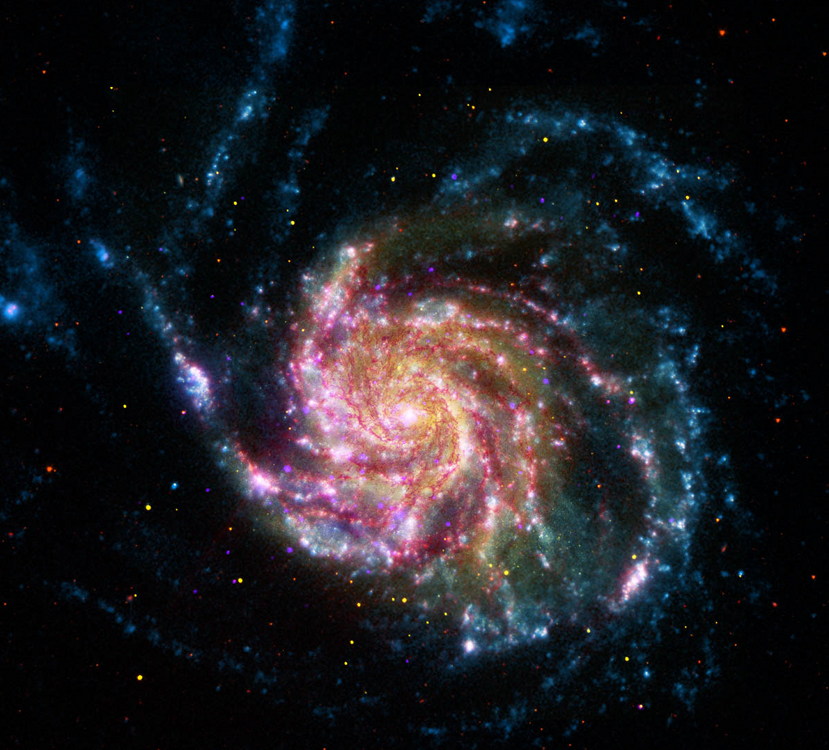
 Credit: X-ray: NASA/CXC/SAO; IR & UV: NASA/JPL-Caltech; Optical: NASA/STScI
Credit: X-ray: NASA/CXC/SAO; IR & UV: NASA/JPL-Caltech; Optical: NASA/STScI
The Pinwheel
Summer is a great time for pinwheels.
Perhaps the most famous is the Pinwheel Galaxy, M101. The Pinwheel is a
spiral galaxy like our own Milky Way, though nearly twice the size of the
Milky Way. Galaxies like the Milky Way and Pinwheel are important because
they provide an active environment for massive star formation, and their
deep gravitational wells trap the enriched material produced by the
explosive evolution of these stars, ultimately driving the chemical
evolution of the cosmos. The galactic environment is complex and best
studied by a multi-wavelength approach: hot solid dust grains
glowing in the infrared, stars shining brightly
in the optical, massive stars pumping out enormous amounts of high-energy
ultraviolet
light, and superhot gas produced by stellar supernovae,
and the neutron
star and black
hole descendents of massive star evolution. The composite of M101
shown above shows four different, combined views of the galaxy obtained by
four NASA space observatories, covering all these different phenomena: an
infrared observation by the Spitzer Space Telescope (red), a
sharp-eyed optical image by the Hubble Space
Telescope, an ultraviolet image by GALEX, and a sharp X-ray image by
the Chandra X-ray Observatory. A
good way to celebrate the unofficial
start of summer in the northern hemisphere.
Published: May 28, 2012
<
HEA Dictionary ● Archive
● Search HEAPOW
● Other Languages
● HEAPOW on Facebook
● Download all Images
● Education ● HEAD
>

Each week the HEASARC
brings you new, exciting and beautiful images from X-ray and Gamma ray
astronomy. Check back each week and be sure to check out the HEAPOW archive!
Page Author: Dr. Michael F. Corcoran
Last modified Tuesday, 27-Feb-2024 10:06:47 EST


